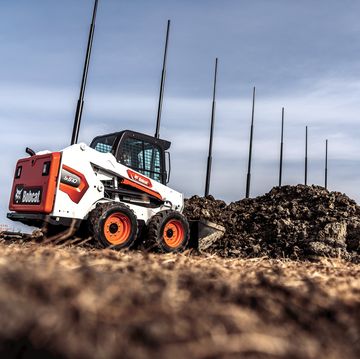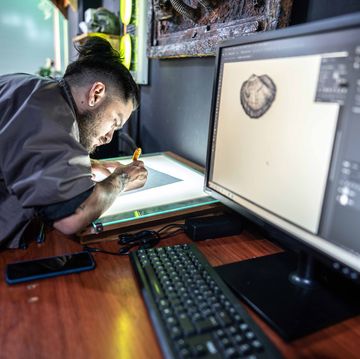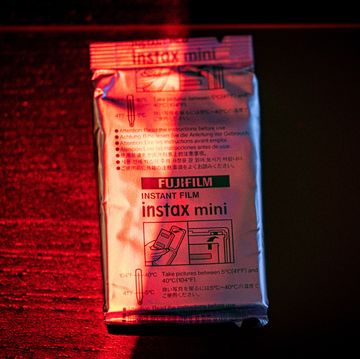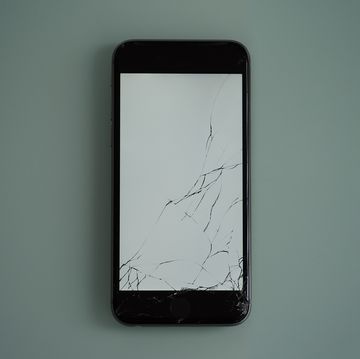Soldering is rapidly becoming the skill of a bygone era. Much like the ability to drive a car with a manual transmission, read a map, or write a check, Gen Z is learning less and less about how to work with their hands—and it’s time for that to change.
Soldering looks much harder than it actually is, and proves a surprisingly useful skill. It’s a process used to bond wires, cables, and electrically conductive materials via a filler metal, which is, well ... solder. Commonly used to assemble and fix electronics, it establishes a connection between wires and other metal surfaces—among many other uses. Sometimes conflated with welding, this process heats the adjoining metals, but doesn’t melt them.
Just last week, I broke out my soldering iron to fix a set of cheaply made string lights; the solder joints connecting the lights themselves to the power source had fizzled out—frankly, it had created an apocalyptic fire hazard. Along with the skill itself, soldering is a comparatively inexpensive hobby to get into.
The Tools You’ll Need
Soldering Iron
Rather unsurprisingly, you’ll need a soldering iron to solder—just be careful not to overspend on your first iron. I first learned how to solder on an ultra-cheap hardware-store unit, and you should, too; I used my hobby-shop special from Harbor Freight well into my time building drones. Once you get the hang of things and have been soldering up a storm for a couple of years, you might want to upgrade to a nicer soldering iron. While these theoretically won’t get much hotter, they’ll warm up more quickly and come packaged with an actual base station to put your soldering iron in while heating up. You’ll also get extras like removable soldering tips—narrower for intricate work and wider for bigger solder joints where you want to flow more heat.
Solder
Solder may sound dead obvious to buy, given that we’re writing a story about it. It’s a metal alloy comprised of tin and lead (often 60 percent tin and 40 percent lead) used to bond items together. However, it’s easy to buy the wrong stuff as soldering can not only be used for electronics, but also for plumbing—different solders are designed for each discipline. Rosin-core solder is the best stuff to buy for electronics. Anything else simply isn’t worth your time as rosin core contains a mild flux to aid adhesion and doesn’t need to be cleaned up afterward. It essentially increases the chances of your solder actually “sticking” to the surface you want it to.
Sponge
One of the last items you’ll need is a wet sponge to clean bits of solder from the tip of your iron. Many nicer kits come with a base station with a basin that you can set a damp sponge into. If you’re starting out, you can just use a bit of sponge. But please, don’t use it on your dishes after you use it for soldering!
⚠️ CAUTION: Keep the sponge away from children as the bits of solder it collects are extremely toxic if ingested.
Work Surface (Optional)
You don’t really need a dedicated work surface to get started in soldering, but it’s nice to have. That’s why I generally use this workmat for all of my soldering jobs. However, you could also just use a cheap rubber doormat, which is nice for catching screws and other small bits that would otherwise roll onto your floor and disappear.
Fundamentals
Most soldering jobs will involve connecting wires to metal pads—think of these as connectors—on a circuit board. Here are some basic jobs that are perfectly manageable for beginners:
- Fixing an old set of string lights
- Upgrading speaker drivers
- Replacing guitar pickups
- Lithium-ion battery replacement
So where do you start? One of the best tips I can give you before you even touch your soldering iron is to get it as hot as possible. If you’re lucky enough to have a soldering iron that has a temperature knob, crank it to the max—for more basic soldering irons (that are always on when plugged in) let them warm up for longer. In any case, you’ll want that thing hotter than a seatbelt sitting in the summer sun all day.
⚠️ CAUTION: Running an iron hot makes things easier to solder, but also runs the risk of melting components. The best tip we can give you is to not leave the tip of your soldering iron on your electronics for longer than 2–3 seconds. Get in, get out, and you’re done.
Preparation is the name of the game when it comes to making a clean connection, so we’re going to start by adding solder to both the wire and the pad that it’s being soldered to—this process is often referred to as tinning.
Once everything is tinned and ready, all you need to do is hold the wire to the pad and melt the solder. As you’re applying heat with your soldering iron, it’s important to have the metal tip heating both the pad and the solder that’s going onto it—note the location where I’m placing the iron. This helps you achieve a much neater solder joint. When the solder warms up, you’ll be able to move the wire closer to the board. Remove the iron, keep the wire where it is, wait for the solder to cool off, and congratulations, you’ve successfully done soldering. With an ultra-hot soldering iron, it’s important to get in and get out quickly, or else you run the risk of damaging components.
Practice, Practice, Practice
I can say with absolute certainty that your first solder joints will likely be pretty dull and messy. However, there are plenty of ways you can practice without messing up expensive electronic components. One of the easiest is to find a buddy that already knows how to solder. Not only will he or she be able to train you up, but they’ll likely have old electronics that you can practice on. If not, some companies make practice boards, which are just circuit boards full of pads that you can practice tinning and soldering wires to.
Thankfully, there’s a very low probability that you’ll ruin the electronics you’re soldering, even if your work is a bit messy; I’ve never ruined any electronics with a soldering iron for what it’s worth. Most of the gains I’ve made from the moment I picked up a soldering iron until now have been working with smaller components and making cleaner solder joints. Start simple and work your way up to more complex jobs.
Whether you’re fixing a set of string lights, putting together a custom-built drone, or fixing a lamp, the sense of accomplishment when you complete a successful job will always keep you looking for another new project. I’ve been soldering for years, but always learn new things the more I do it.
My latest endeavor is putting together my own fully custom mechanical keyboard. Sure, it’s not an inherently difficult job, but there’s a lot of soldering involved. Stay tuned.
Matt Crisara is a native Austinite who has an unbridled passion for cars and motorsports, both foreign and domestic. He was previously a contributing writer for Motor1 following internships at Circuit Of The Americas F1 Track and Speed City, an Austin radio broadcaster focused on the world of motor racing. He earned a bachelor’s degree from the University of Arizona School of Journalism, where he raced mountain bikes with the University Club Team. When he isn’t working, he enjoys sim-racing, FPV drones, and the great outdoors.



















